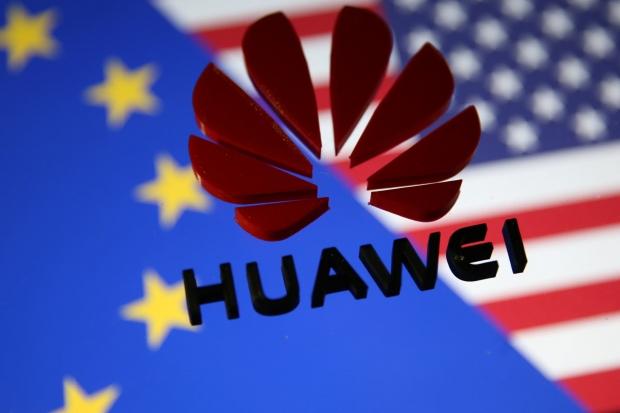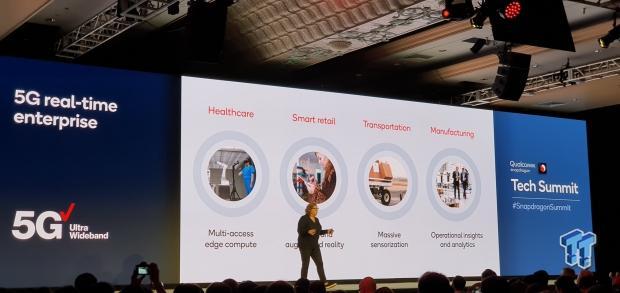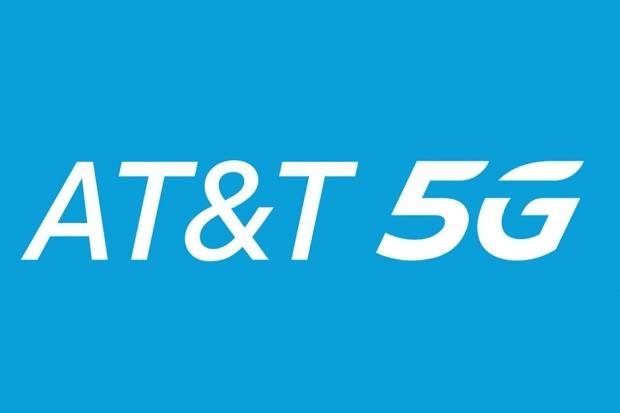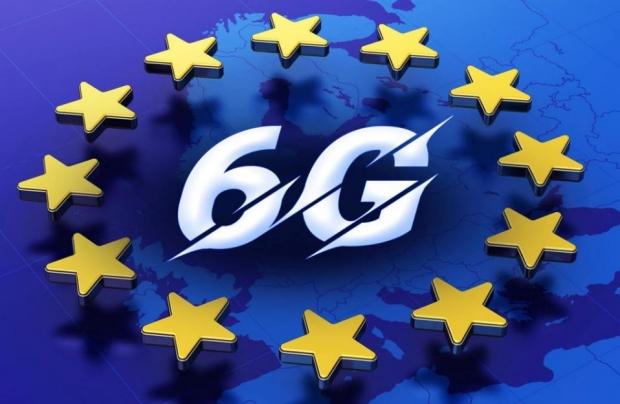Connectivity, Communications & Cloud News - Page 8
Experts say coronavirus could force large scale 'internet rationing'
It appears the havoc that COVID-19 coronavirus is causing on the world is not limited to just forcing us all inside in a global lockdown, but it is wrecking havoc on the internet, too.
Major internet services like Netflix and YouTube are having to reduce the quality of their streaming resolutions to keep up with the massive uptick in demand, with hundreds of millions of people stuck inside their homes. But now, experts in European countries are predicting we'll see large-scale "internet rationing" that would prioritize things like health and emergency services, as well as online education over everything else.
Matthew Howett, principal analyst at Assembly, told The Telegraph: "If we end up in a situation where worldwide, 850m children start to receive lessons virtually for an extended period of time, then networks might want to start prioritizing video traffic over gaming traffic".
Continue reading: Experts say coronavirus could force large scale 'internet rationing' (full post)
Taiwan rejects Huawei on 5G rollout: Chunghwa Telecom chooses Nokia
Nokia has been chosen to deploy a 5G radio network for Chunghwa Telecom in Taiwan, where it will deploy 5G technology in the Central and Southern Region of Taiwan.
Chunghwa Telecom has its eyes on becoming the 5G leader in Taiwan, and will be using Nokia's range of 5G radio technology to make it happen. Chunghwa Telecom will be the first in Taiwan with 5G connectivity, with the continued relationship between the companies extending back to 1973 -- right up to the next generation of 5G technology.
The rollout of 5G technology is already happening in Taiwan, and will be live for users to use in July -- aiming at high-end 4K video streaming and VR technology. Nokia will tap the huge array of Chunghwa Telecom's existing LTE install base with huge spectrum resources at its disposal, to launch a 5G non-standalone (NSA) using multiple bands -- where in the future it will expand on that with 5G standalone (SA).
Continue reading: Taiwan rejects Huawei on 5G rollout: Chunghwa Telecom chooses Nokia (full post)
US military says that 5G is 'crucial' for Space Force operations
It looks like China is in the spotlight once again with 5G communications, with the US military now weighing in underlining that Huawei and China are a big global threat.
The recently formed US Space Force requires 5G technology to move forward, with the US military saying "Space-based communications will play a key role in connecting 5G devices". Air Force acquisition officer Will Roper adds: "We need to up our game in 5G. As more autonomy moves to the edge of the internet of things, it's going to have to be supported by more bandwidth. It would be a shame if something that is going to control most of the data moving from machine to machine commercializes first overseas".
The US military officials seemed to be concerned with Huawei and China's overall presence in communications could undermine military operations -- especially with the rise in 5G technology. If the US military relies on 5G connectivity more and more, they can't have a foreign power and possible enemy in China building its infrastructure using Chinese-made tech from the likes of Huawei.
Continue reading: US military says that 5G is 'crucial' for Space Force operations (full post)
Japan ushers in 10Gbps internet service for only $55 per month
Japanese ISPs are now offering super-fast 10Gbps internet connections, with NTT East and NTT West (Nippon Telegraph And Telephone) providing people with 10Gbps internet for just $55 per month.
10Gbps is pretty damn insane as it'll offer users over 1GB/sec download speeds, but you probably won't get those speeds for a variety of reasons. You'll need a SSD that can drive over 1GB/sec read/writes, with SATA III maxing out at 600MB/sec you're going to need an NVMe-based SSD capable of multiple gigabytes per second of speeds... for your internet connection.
The super-fast FLET's Hikari Cross compatible router is there for your 10Gbps internet service needs, costing around $4.48 per month on top of your $55 internet connection. You will have 10Gbps support as well as Wi-Fi 6 support, so you're looked after in both wired, and wireless connectivity at high speeds.
Continue reading: Japan ushers in 10Gbps internet service for only $55 per month (full post)
Verizon splashes $80 million to give Miami 5G before the Super Bowl
Veirzon is spending up big in the ramp up to the Super Bowl, with the US telco giant spending $80 million to blanket downtown Miami with 5G connectivity.
The company has promised that the areas around the Miami airports, downtown Miani, and around Bayfront Park will have expanded 5G coverage. Verizon is also sponsoring a Super Bowl Live event where it will be showing off various technology that displays why you need, and why you'll benefit from 5G technology.
Verizon will have an immersive, on-the-field experience at the Super Bowl itself, and will be running through to February 1. Now, there aren't many smartphones on the market that are powered by 5G just yet, but Samsung has a few in the Galaxy S10 5G and Galaxy Note 10 5G, while LG has its V50 ThinQ 5G smartphone. You will need one of these smartphones, and to have your phone connected to Verizon to enjoy 5G.
Continue reading: Verizon splashes $80 million to give Miami 5G before the Super Bowl (full post)
Intel's 'new' Thunderbolt 4 is just a re-branding of Thunderbolt 3
CES 2020 - Intel kinda teased its next-gen Thunderbolt 4 technology at CES 2020 this week, but didn't go into detail about it -- and now, we know why.
Thunderbolt 4 is essentially a re-branding of Thunderbolt 3, with ex-TweakTown staffer and now Tom's Hardware contributor Paul Alcorn talking with Intel during CES. Alcorn writes: "Intel confirmed it referenced USB 3.1 in the presentation, meaning Thunderbolt 4 is in fact not faster than Thunderbolt 3".
Articles started flying quick and fast out of CES 2020 that Intel had teased Thunderbolt 4, after it had pushed out slides that its new Tiger Lake architecture had integrated Thunderbolt 4. Confusion happened pretty quickly, with Intel trying to clarify by saying: "Thunderbolt 4 continues Intel leadership in providing exceptional performance, ease of use and quality for USB-C connector-based products".
Continue reading: Intel's 'new' Thunderbolt 4 is just a re-branding of Thunderbolt 3 (full post)
Apple to launch satellites in 5 years, can we call them iSatellites?
Apple is reportedly looking into launching its own satellites in an effort that would totally bypass wireless carriers here on Earth, according to the latest rumors.
Bloomberg is reporting that Apple has its own "secret team working on satellites and related wireless technology, striving to find new ways to beam data such as internet connectivity directly to its devices". This team has just over 10 people working on it so far, with Apple wanting to see their results "within five years".
Apple's satellite plans might fall out of the sky before they're even launched, with Bloomberg adding that Apple CEO Tim Cook is interested in the satellite project... but it could be scrapped as "a clear direction and use for satellites hasn't been finalized". I can see Apple blasting next-gen 5G and other data directly to its devices, bypassing wireless carriers -- but it's a lot easier saying that, than actually doing it -- and doing it to Apple's very high standards.
Continue reading: Apple to launch satellites in 5 years, can we call them iSatellites? (full post)
Verizon: 'we're the first with 5G on the beach' at Snapdragon Summit
Qualcomm's annual Snapdragon Summit started today, with the whirlwind announcement of its next-gen Snapdragon 865 mobile platform -- a cemented future in 5G expecting 2.8 billion 5G devices in 2025, and then Verizon took the stage.
Verizon has been a close partner of Qualcomm for many years now, and has been investing into its infrastructure to have it ready for the new world of 5G in 2019, 2020, and beyond. Verizon has been working with partners like the band Chainsmokers on some augmented reality experiences at concerts powered by 5G.
The 5G-powered AR experience was enabled thanks to the multi-gigabit speeds, something that you couldn't do on a sometimes unreliable Wi-Fi connection or much slower 4G connection. Verizon has also been working with Sony on using 5G technology inside of high-end cameras at sports matches to pull high-end video to the post-production office faster.
Continue reading: Verizon: 'we're the first with 5G on the beach' at Snapdragon Summit (full post)
AT&T's new 5G will be the same as its fake 5G E at launch
For those of you excited for the newest high-speed 5G technology, you may be waiting a bit longer. AT&T, which is scheduled to roll out its new 5G service on the 850MHz spectrum, looks to be nothing more than the new band with expected performance similar to the companies' much-despised "Fake 5G" offering of "LTE Advanced" or "5G E".
Users in late 2018 and early 2019 were understandably underwhelmed and upset when they saw a 5G E icon pop up on their AT&T smartphone. They were initially thrilled at the possibility of new insane speeds, only to be met by performance in many cases well under their average 4G LTE speeds.
AT&T has made some very bold claims in regards to 5G service and their capabilities and roadmap, the timeline they provide is for test markets of 5G to be live in late 2018 with devices in hand the same year. We can only assume this was the 5G E service they are referencing, but the fact that the move to actual 5G may be as underwhelming as the 5G E service is not a good sign. We can only hope that this is a mere stepping stone to the actual true 5G, which will come to pass on the 700MHz band sometime soon.
Continue reading: AT&T's new 5G will be the same as its fake 5G E at launch (full post)
6G logo revealed, the future is almost here!
5G is barely here and while I have a 5G handset myself, Samsung's beefy Galaxy Note 10+ 5G, the speeds aren't doing much for me... so far.
This doesn't mean 5G is goign to stop as it has an unstoppable amount of momentum already, with Qualcomm seemingly leading the 5G efforts globally. This won't stop the development of 6G at all, and now we even know what the 6G logo looks like.
Chinese manufacutrer Vivo Mobile has just registrered a 6G logo with the EUIPO (European Union Intellectual Property Office) recenbtly... like, really recent, as in Octoebr 22. This is very fresh, just like 6G is. Vivo is already dabbling in 5G-enabled smartphones with its recently-unveiled NEX 3 handset.
Continue reading: 6G logo revealed, the future is almost here! (full post)










